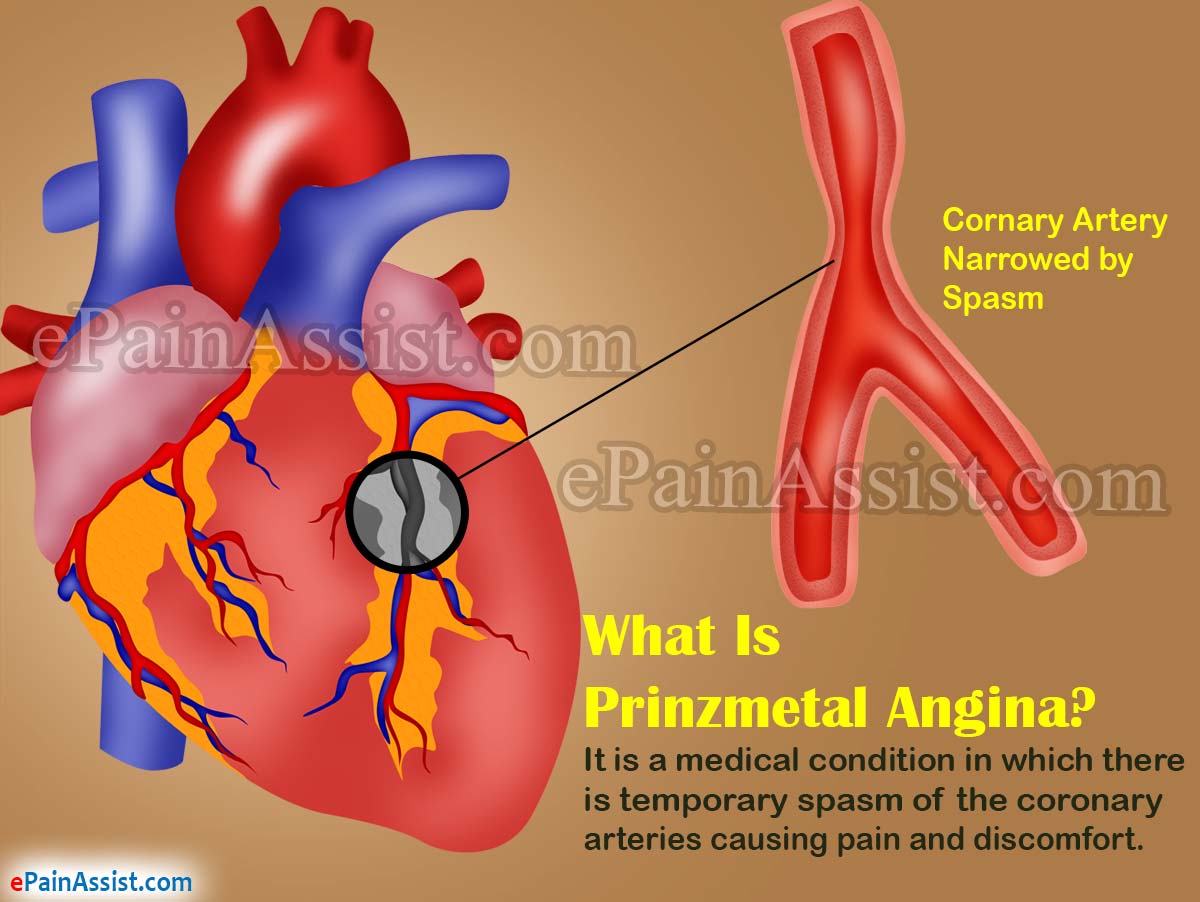What Is Prinzmetal Angina?
Prinzmetal Angina also known by the name of Coronary Artery Spasm is a medical condition in which there is temporary spasm of the coronary arteries causing pain and discomfort. This condition is usually seen in people under the age of 50. These spasms can be extremely mild to very severe. If the spasms last for more than 15 minutes then it can cause some damage to the heart or may even cause a heart attack.

What Is Angina?
To completely understand Prinzmetal Angina, it is important to understand what is angina first. Angina is the name given to discomfort and pain resulting due to some heart muscle not receiving enough blood supply that is required for it to function. Angina is normally caused due to coronary heart disease or CHD. This condition arises due to the arteries becoming blocked with plaque. This plaque may start to slowly build and over time cause the arteries to become so narrow that it may affect the blood supply to the heart. Angina is said to occur when the heart gets stressed and needs to work more than usual for the body to function normally. This happens during extreme physical activity or severe emotional response. Angina is very rarely caused by coronary artery spasms.
What Is The Difference Between Angina Caused By Coronary Heart Disease And Coronary Artery Spasm?
Individuals who have angina due to coronary heart disease will have pain with activities or extreme emotion which will go away by resting or taking an anginal medication like nitroglycerine. Individuals whose pain is caused due to coronary artery spasms will have pain first thing in the morning or while at rest instead of when doing physical activity.
What Causes Prinzmetal Angina?
The root cause of Prinzmetal Angina is not clearly known, although there are certain risk factors which can make one prone to Prinzmetal Angina. Smoking is the most common risk factor which can predispose an individual to Prinzmetal Angina. Gender also plays a role in development of Prinzmetal Angina where female are more prone to have this condition than males. Individuals with a prior history of Prinzmetal Angina are more at risk for having this condition. Individuals with behavioral disorder like always being aggressive or restless and on the go are more likely to get Prinzmetal Angina. There are certain classes of medications like antibiotics or chemotherapy drugs can cause Prinzmetal Angina. Individuals who are involved with recreational drug abuse are also at increased risk for having Prinzmetal Angina.
What Are The Symptoms Of Prinzmetal Angina?
The main symptom of Prinzmetal Angina is a tight feeling in the chest along with squeezing pain. The pain is localized generally in the center of the chest which may radiate to the shoulders, back, neck, jaw and arm. Sometimes the hands may have pain as well. At times, there may be no pain but just an uncomfortable sensation in the chest.
How Is Prinzmetal Angina Diagnosed?
The moment you start observing the symptoms an immediate consult with a physician is required who will take a history as to the duration of the symptoms and what are the factors which make the symptoms better or worse. You need to clearly tell the doctor whether you are a regular smoker or have any other risk factors for Prinzmetal Angina. Your family history also plays an important role in diagnosing Prinzmetal Angina. The physician will then conduct a physical examination looking for any signs of hypertension or any murmurs in the heart and may also order blood levels. Your cholesterol levels may also be checked. Some of the other tests that may be performed are EKG, echocardiogram, and a Holter monitor to look at the status of the heart and whether it is functioning normally. An exercise tolerance test may also be performed to confirm the diagnosis of Prinzmetal Angina.
How Is Prinzmetal Angina Treated?
Majority of the symptoms of Prinzmetal Angina can be relieved by taking nitrates and calcium-channel blockers. These medications dilate and relax the arteries and restore normal flow of the blood to the heart. These medications also are helpful in preventing frequent episodes of Prinzmetal Angina. Studies also suggest that statins have also shown to be effective in relieving symptoms of Prinzmetal Angina. Statins are also helpful in preventing buildup of plaques. Lifestyle modification is the key to prevent episodes of Prinzmetal Angina with abstaining from smoking and drinking alcohol or using recreational drugs.
In some cases sten implantation is done to dilate the arteries and restore normal blood flow to the heart. This is done when the normal conservative approaches of medications and lifestyle modifications do not work.
If an individual has arrhythmia which cannot be controlled with medications alone then an ICD or an Implantable cardiac defibrillator is placed which stops the arrhythmia.
How Can I Reduce My Risk Of Prinzmetal Angina?
The best way to reduce the risk of having Prinzmetal Angina is by having a healthy lifestyle. This can be done by the following:
- Do not smoke or drink alcohol
- Do not use drugs
- Exercise regularly
- Take medications as prescribed by the physician
- Maintain a healthy and balanced diet
- Be physically active
- Maintain good control of cholesterol and blood pressure
- Maintain a good body weight
- Try and remain stress free which can be done by meditation or yoga.
